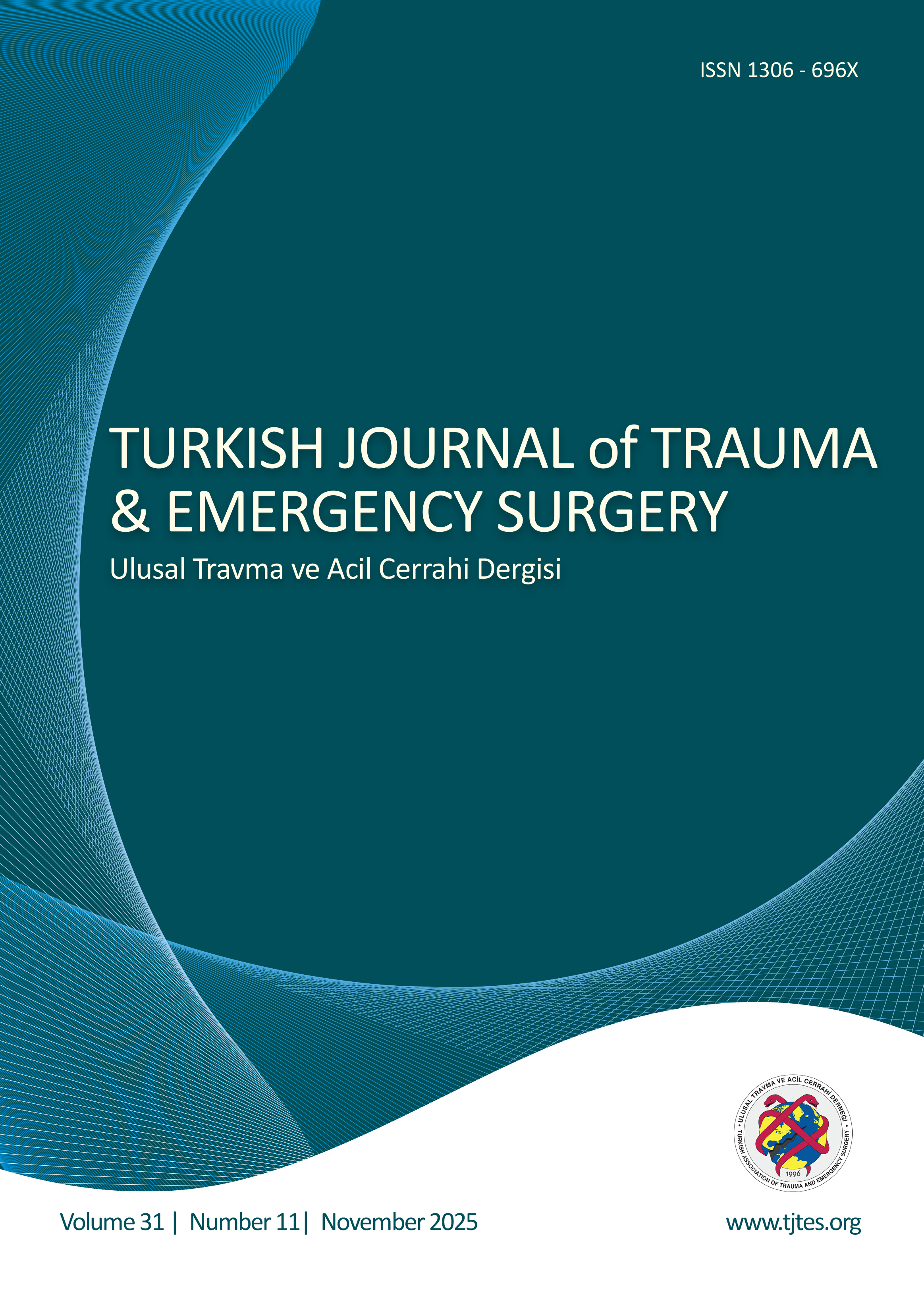Hızlı Arama
BISAP ve Modifiye Glaskow Skoruna göre akut pankreatitde hastalık ciddiyetini ve komplikasyonlarını öngörmede hematolojik parametrelerin rolü
Gökhan Akdur1, Okan Bardakçı1, Murat Das1, Okhan Akdur1, Yavuz Beyazit21Çanakkale Onsekiz Mart Üniversitesi Tıp Fakültesi, Acil Tıp Anabilim Dalı, Çanakkale2Çanakkale Onsekiz Mart Üniversitesi Tıp Fakültesi, Dahiliye Anabilim Dalı, Çanakkale
AMAÇ: Nötrofil-lenfosit oranı (NLR), trombosit lenfosit oranı (PLR) ve kırmızı kan hücresi dağılım genişliği (RDW), daha önce farklı hastalık durum-larında bir şiddet göstergesi olarak tanımlanmış iltihap durumunun basit göstergeleridir. Bu çalışma, bu basit hematolojik indekslerin akut pankreatit (AP) hastalarında CRP ve beyaz kan hücreleri gibi geleneksel enflamasyon belirteçleri ve bunların, Akut Pankreatit Şiddeti İçin İndeksi (BISAP) ve Modifiye Glaskow Prognostik (mGPS) skorları ile ilişkisini değerlendirmektedir.
GEREÇ VE YÖNTEM: Bu geriye dönük çalışma Çanakkale Onsekiz Mart Üniversitesi Acil Servisinde yapıldı. Toplam 171 hasta (erkek/kadın: 68 [%39.8) / 103 [%60.3)] APli ve 59 yaş ve cinsiyet uyumlu sağlıklı (erkek/kadın: 23 [%39] / 36 [%61]) kontroller bu çalışmaya dahil edildi. Hastalar BISAP ve mGPSye göre ciddiyet ve istenmeyen sonuçlara göre gruplandırıldı ve gruplar arasında NLR, PLR ve RDW değerlerini karşılaştırmak için analiz edildi.
BULGULAR: Akut pankreatit hastalarının ve kontrol grubunun ortalama NLR değerleri sırasıyla 9.62±6.34 ve 2.04±1.08 (p<0.001) iken, AP has-talarının ve kontrol grubunun ortalama PLR değerleri sırasıyla 221.83±122.43 ve 83.30±38.89 idi (p<0.001). RDW dışında, diğer tüm hematolojik indekslerin hastalık başlangıcında, hem hafif hem de şiddetli hastalıkta yükseldiği (WBC için p<0.05; NLR, PLR ve CRP) tespit edildi. NLR ve PLR, AP ile ilişkili ciddi komplikasyonları tahmin etmek için önemli olduğu görüldü.
TARTIŞMA: Bu çalışma APde NLR ve PLRnin arttığını göstermiştir. Ayrıca kan NLR ve PLR değerleri, AP ile bağlantılı hastalık şiddetini ve olumsuz sonuçları tahmin edebilir ve hastalık ciddiyetini tahmin etmek için yardımcı bir belirteç olarak kullanılabilir.
Anahtar Kelimeler: Akut pankreatit, BISAP; modifiye Glaskow; MPV; NLR; PLR; RDW.
Diagnostic utility of hematological indices in predicting adverse outcomes and severity of acute pancreatitis based on BISAP and modified Glasgow score
Gökhan Akdur1, Okan Bardakçı1, Murat Das1, Okhan Akdur1, Yavuz Beyazit21Department of Emergency Medicine, Çanakkale Onsekiz Mart University Faculty of Medicine, Çanakkale-Turkey2Department of Internal Medicine, Çanakkale Onsekiz Mart University Faculty of Medicine, Çanakkale-Turkey
BACKGROUND: The neutrophil-lymphocyte ratio (NLR), platelet-lymphocyte-ratio (PLR), and red blood cell distribution width (RDW) are simple indicators of inflammatory status previously established as a severity indicator in distinct disease states. This study aimed to determine the impact of these simple hematologic indices with conventional inflammation markers such as C-reactive pro-tein (CRP) and white blood cells in acute pancreatitis (AP) patients and their relationship with AP risk stratification scores including Bedside Index for Severity of Acute Pancreatitis (BISAP) and modified Glaskow Prognostic score (mGPS) scores.
METHODS: This retrospective study was performed in the emergency department of Canakkale Onsekiz Mart University. A total of 171 patients (male/female: 68 [39.8%]/103 [60.3%]) with AP and 59 age and gender matched healthy subjects (male/female: 23 [39%]/36[61%]) as controls were enrolled in the present study. The patients were grouped according to severity and adverse outcomes according to BISAP and mGPS and a comparative analysis was performed to compare the NLR, PLR, and RDW between groups.
RESULTS: The mean NLR values of AP patients and control group were 9.62±6.34 and 2.04±1.08, respectively (p<0.001), while the mean PLR values of AP patients and control group were 221.83±122.43 and 83.30±38.89, respectively (p<0.001). Except from RDW, all the other hematologic indices were found to be elevated (p<0.05 for WBC; NLR, PLR, and CRP) on both mild and severe disease at disease onset. NLR and PLR showed significant predictive ability for estimating serious complications associated with AP.
CONCLUSION: The present study showed that NLR and PLR is increased in AP. Moreover, peripheral blood NLR and PLR values can predict disease severity and adverse outcomes associated with AP and can be used as an adjunctive marker for estimating disease severity.
Keywords: Acute pancreatitis, Bedside Index for Severity of Acute Pancreatitis; Modified Glaskow; mean platelet volume; neutrophil-lymphocyte ratio; platelet-lymphocyte-ratio; red blood cell distribution width.
Makale Dili: İngilizce





